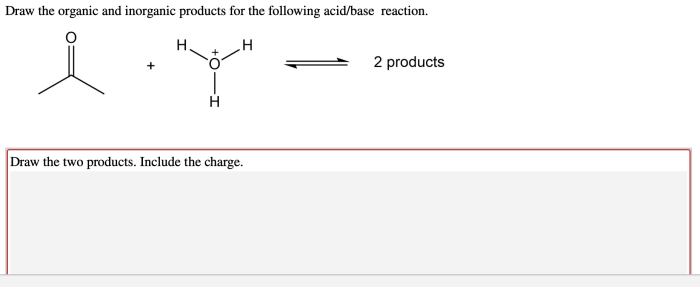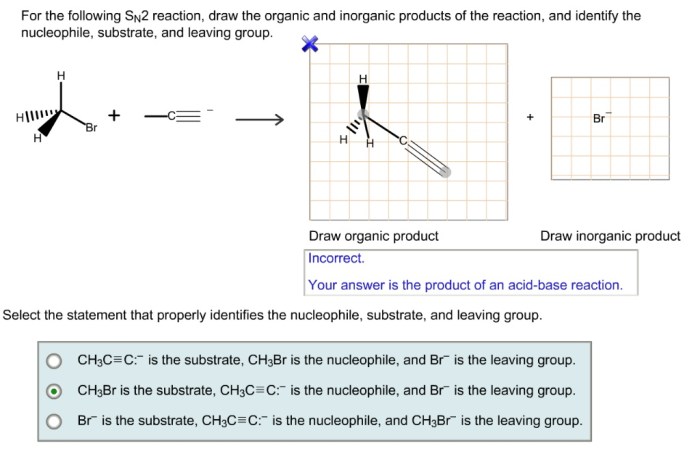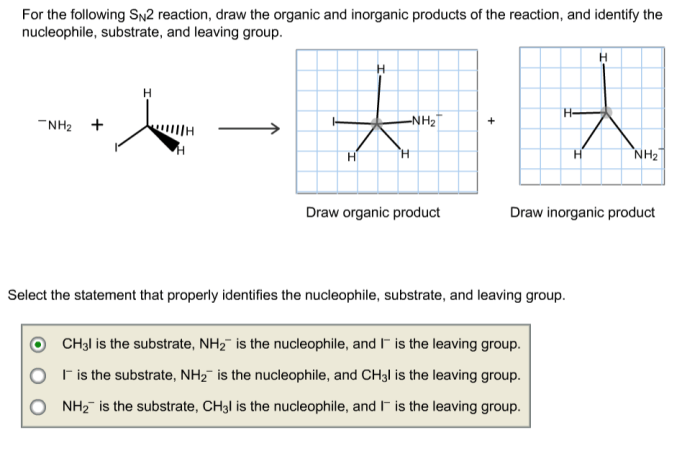In the realm of chemistry, the distinction between organic and inorganic compounds is paramount. Draw the Organic and Inorganic Products delves into this fascinating subject, exploring the fundamental differences between these two classes of substances and providing a comprehensive guide to drawing their structural formulas.
Delving into the intricacies of organic products, we uncover their unique chemical structures, characteristic properties, and diverse applications. Conversely, we delve into the inorganic realm, examining the distinct structural features, properties, and industrial significance of inorganic compounds.
Organic and Inorganic Products

Organic and inorganic compounds are two main classes of chemical compounds that differ in their composition, structure, and properties.
Organic compounds are composed of carbon atoms, along with hydrogen, oxygen, nitrogen, and other elements. They typically have covalent bonds and form complex molecules with diverse structures. Inorganic compounds, on the other hand, do not contain carbon and are composed of elements such as metals, non-metals, and salts.
They often form ionic or metallic bonds and have simpler structures.
Organic Products, Draw the organic and inorganic products
Organic products include a wide range of substances, such as:
- Hydrocarbons: Compounds composed solely of carbon and hydrogen, such as methane, ethane, and propane.
- Alcohols: Compounds containing a hydroxyl (-OH) group, such as methanol, ethanol, and isopropanol.
- Carboxylic acids: Compounds containing a carboxyl (-COOH) group, such as acetic acid, propionic acid, and butyric acid.
Organic products typically have covalent bonds and form complex, three-dimensional structures. They are often soluble in organic solvents and have low melting and boiling points.
Inorganic Products
Inorganic products include a wide range of substances, such as:
- Salts: Compounds formed by the reaction of an acid and a base, such as sodium chloride, potassium nitrate, and calcium carbonate.
- Metals: Elements that are shiny, malleable, and ductile, such as iron, copper, and aluminum.
- Non-metals: Elements that are not shiny, malleable, or ductile, such as oxygen, nitrogen, and chlorine.
Inorganic products typically have ionic or metallic bonds and form simple, crystalline structures. They are often soluble in water and have high melting and boiling points.
Drawing Organic and Inorganic Products
To draw the structural formulas of organic compounds, follow these steps:
- Identify the functional group(s) present in the compound.
- Draw the carbon skeleton of the compound.
- Add the functional group(s) to the carbon skeleton.
- Add hydrogen atoms to satisfy the valencies of all atoms.
To draw the structural formulas of inorganic compounds, follow these steps:
- Identify the ions present in the compound.
- Draw the ions in their correct positions.
- Balance the charges of the ions.
Common Queries: Draw The Organic And Inorganic Products
What are the key differences between organic and inorganic compounds?
Organic compounds contain carbon, while inorganic compounds do not. Organic compounds are typically covalent, while inorganic compounds are often ionic. Organic compounds are generally less soluble in water than inorganic compounds.
How do I draw the structural formula of an organic compound?
To draw the structural formula of an organic compound, start by identifying the carbon atoms. Then, connect the carbon atoms with lines to represent the bonds between them. Add hydrogen atoms to the carbon atoms to satisfy their valence electrons.



